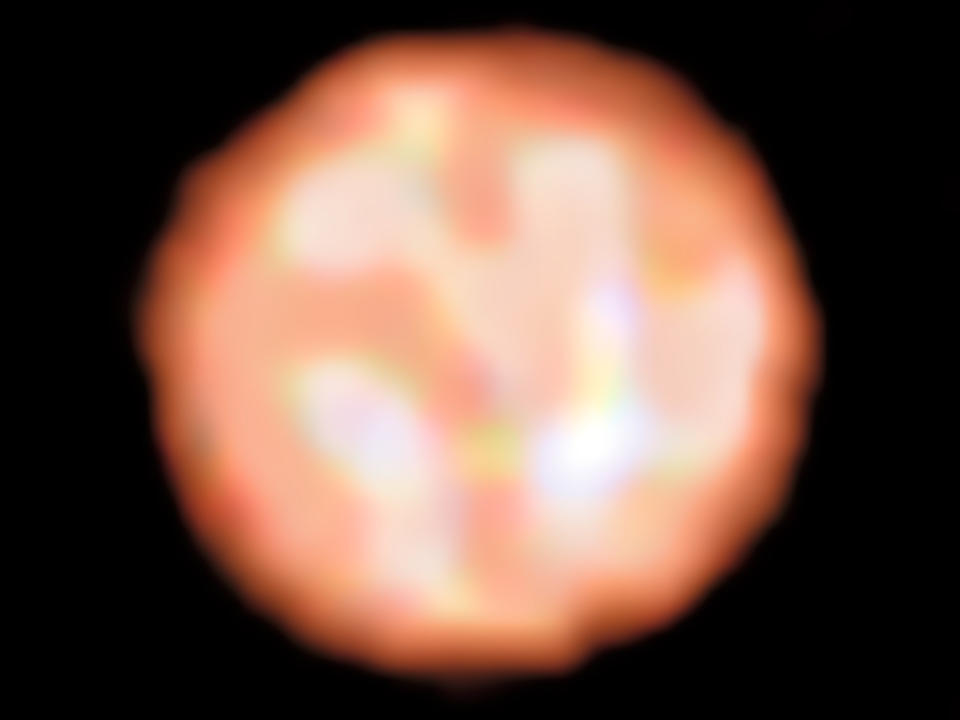Detailed image of red giant confirms theory about massive stars
π1 Gruis is 530 light years away.
The red giant π1 Gruis is 530 light-years away, and it's reaching the end of its natural life. Soon, scientists think it will become a planetary nebula. But before it dies, astronomers are using π1 Gruis to shed light on some of the secrets of stellar phenomena. Now, using the most detailed images of a distant star ever captured, scientists have confirmed existing theories about giant stars in the late stages of their life. The results were published in Nature.
The image in question was captured in December by ESO's Very Large Telescope, which is in fact an array of four different telescopes. Using the four telescopes in concert, astronomers were actually able to view granulation patterns on the surface of π1 Gruis. This, in turn, led to confirmation of existing theories about the surfaces of giant stars.
Stars use convection, which is the process through which heat is transferred due to the movement of molecules, to transfer energy. Scientists theorized that stars as large as π1 Gruis should have a low number of convective cells, but they should be much larger than those found on our sun. This is because the density of our sun is much greater than that of a large red giant.
Now, through direct observation of π1 Gruis' surface, a group of scientists was able to determine that the granulation cells on the red giant are much, much larger than that of our sun -- 2,000 km across on our host star, versus 120 million kilometers across (or 27 percent of the red giant's diameter) on π1 Gruis. This confirms exactly what scientists predicted. It's great to discover exciting new things about space, but it's also affirming to discover you were on the right track all along.



